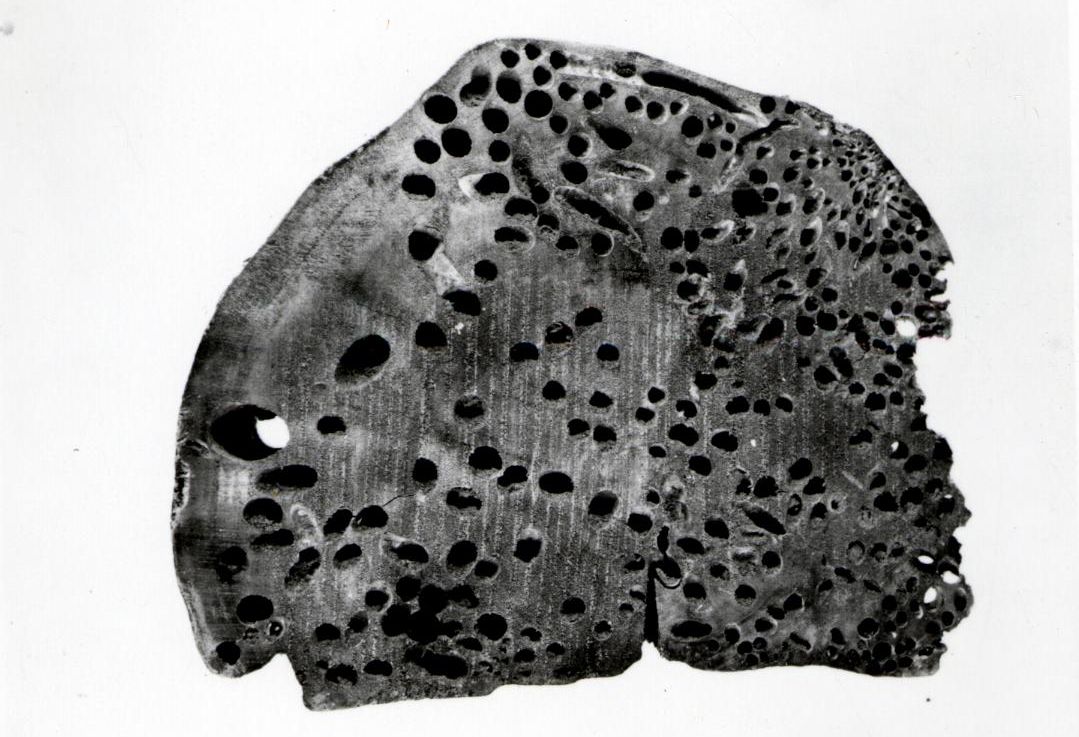
How the shipworm manages to cause such severe damage to wood in water, a team of researchers led by the University of Massachusetts at Amherst discovered, the UMass Amherst press service reported on June 5.
The mystery of the world’s most destructive and mysterious mollusk has implications for everything from climate change to human health, researchers say.
They terrorized the navies of Ancient Greece, were to blame for the shipwreck of Christopher Columbus, contributed to the death of the Spanish Navy, and also caused the collapse of the docks in San Francisco Bay, but so far scientists have not been able to identify with precision. how shipworms are a family of mollusks, manages to cause such damage.
A team of researchers led jointly by UMass Amherst and the University of Plymouth, which also includes collaborators from the University of Maine and the Chan School of Medicine at UMass Amherst, has discovered that a population of commensal microbes living in an intestinal suborgan previously unexplored called “Typhlosol” has the ability to secrete enzymes, necessary for the digestion of lignin, the hardest part of wood.
“Shipworms are very important animals.”“says Reuben Shipway, co-author of the study. — They are found in all the world’s oceans and have not only changed history, but are ecosystem engineers and play a fundamental role in the aquatic carbon cycle. “It’s amazing that we didn’t have a full understanding of how they do it.”.
Wood is a wonderful substance: flexible and durable. Its fibrous but nutritious cellulose is an excellent food, but only for those living things that can digest it and also reach it through the layer of lignin, the hard, armor-like substance that surrounds the cellulose.
Microbiologists have long known that animals that can digest lignin, such as termites, contain specialized symbiotic colonies of microbes in their intestines that do the work of breaking down lignin for them.
“But“says the study’s lead author, Barry Goodell, former professor of microbiology at MIT Amherst and professor emeritus at the University of Maine.” “It was long believed that the digestive tract of shipworms was virtually sterile.”.
Goodell and Shipway have spent much of the last decade trying to answer this question, testing many hypotheses, but none have unlocked the secret of shipworms. “We decided to take a closer look at the intestines of the shipworm.Goodell said, “Just in case the researchers who have been working on this for the last hundred years have missed something.”.
It turns out that shipworms have a curious suborgan called typhlosol (“It looks like Salvador Dalí’s mustache upside down”, noted Shipway), which is integrated into the digestive tract of the mollusk. Previous researchers believed that Typhlosol served as a food remover, but when Goodell and Shipway did the precise work of culturing the Typhlosol contents and then used equipment at Argonne National Laboratory for metagenomic analysis using gene probe microscopy at the Institute for Life Sciences Applied Life Sciences at UMass Amherst, they were able to discover something that generations of researchers had overlooked: hidden groups of bacterial symbionts capable of producing enzymes that break down lignin.
This research not only helps solve a long-standing mystery, but may also have important practical applications. Biotechnology companies are searching for new enzymes that can digest recalcitrant organic substrates more efficiently than current bioindustrial processes allow. Furthermore, new sources of enzymes that can modify the structure of biomass waste are very important for the development of this field.
Meanwhile, previously identified shipworm symbionts have proven to be a treasure trove of natural products, such as new antiparasitic antibiotics, that may have significant effects on human health.
As for climate change, research like this could help improve models that predict how CO₂ and other greenhouse gases enter the environment, especially when large amounts of woody debris from the land end up in the ocean, where much of it passes through the intestine of a shipworm.
Finally, several animal species, including other mollusks, worms and even frog tadpoles, also possess typhlosol, which has not been studied in depth until now. If these animals were found to have symbionts similar to those of shipworms, it could change our understanding of how these animals make their way in the world.
“It’s very satisfyingGoodell says of the study. — “We have been trying to unravel this mystery for years and have finally discovered the secret of the shipworm bacterial symbiont.”.
The participants presented the results of the study in the article “The first report of microbial symbionts in the digestive system of shipworms; wood-boring mollusks”, published in the journal International Biodeterioration and Biodegradation.
Source: Rossa Primavera
I am Michael Melvin, an experienced news writer with a passion for uncovering stories and bringing them to the public. I have been working in the news industry for over five years now, and my work has been published on multiple websites. As an author at 24 News Reporters, I cover world section of current events stories that are both informative and captivating to read.
